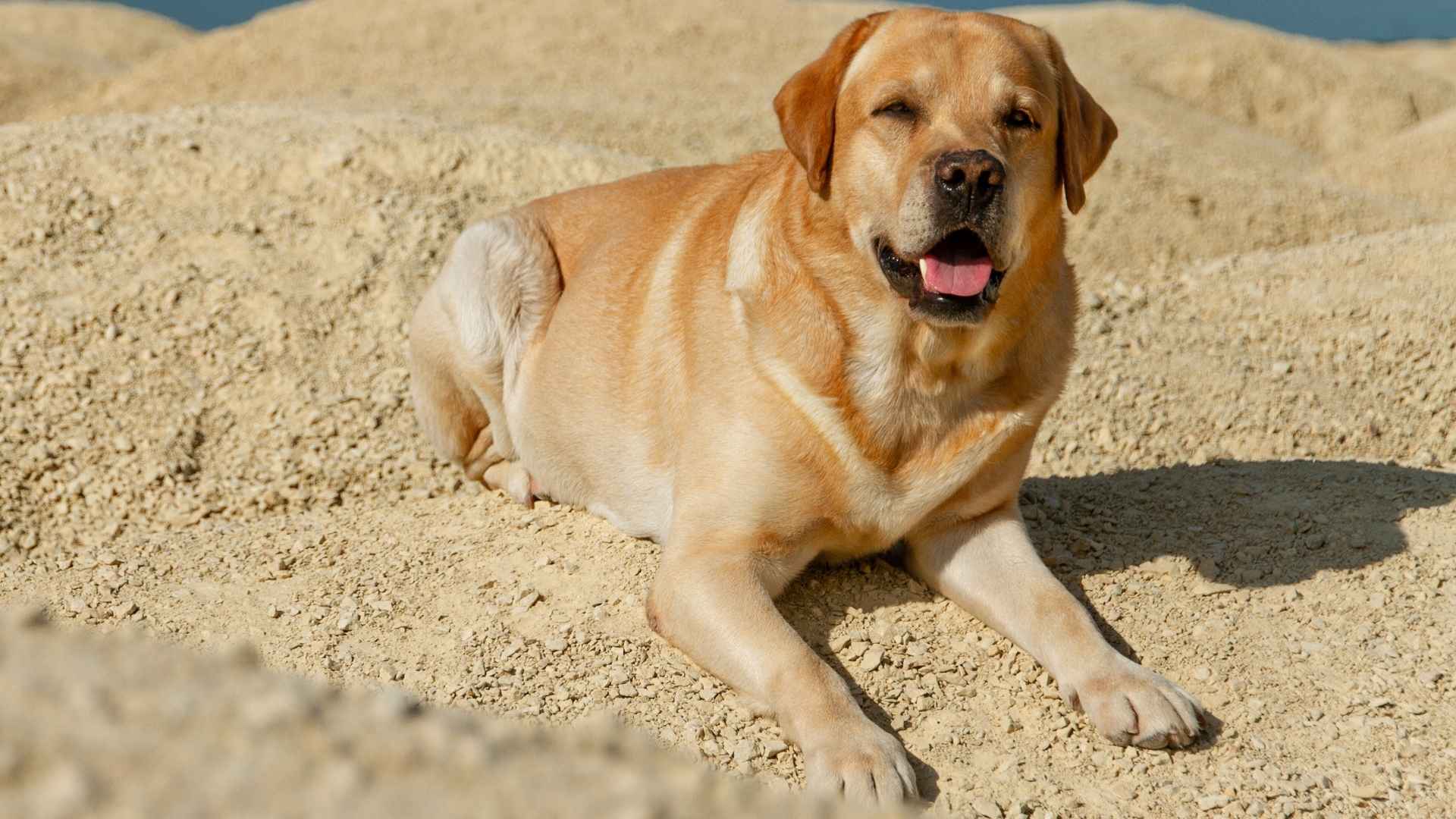Deserts make up over one-third of the Earth’s land surface, according to the Universe Today. Yet few think about dogs thriving in such conditions. While many breeds are suited to grassy backyards and snow-covered trails, there are dogs built for the dry heat, blazing sun, and rough terrain of desert life.
These breeds not only survive, they adapt, conserve energy, and even enjoy the sand and solitude. They’ve been shaped by centuries of exposure to extreme climates, and their features reflect that. From heat-tolerant coats to smart hydration instincts, they know how to handle the harshest places on Earth.
In this guide, we’ll explore the dog breeds best suited for desert regions, how they thrive, and what makes them such natural companions for dry, rugged environments.
Dog Breeds for Desert Life
1. Saluki
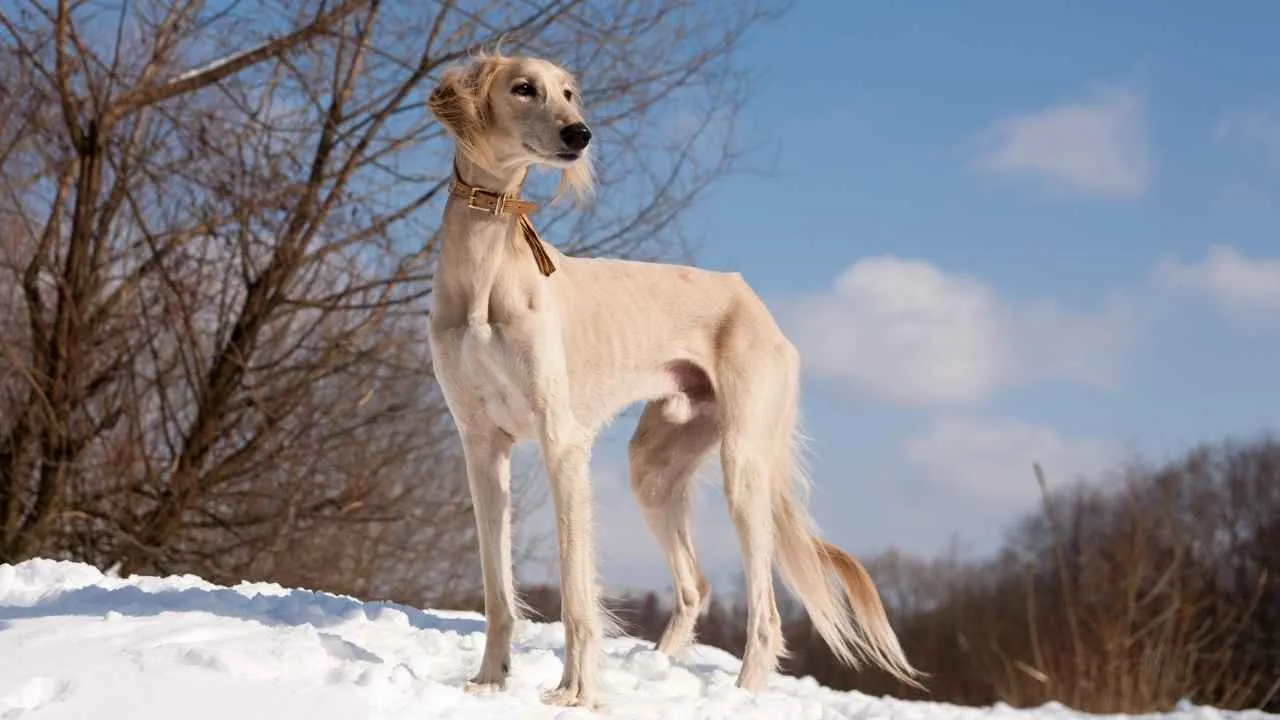
Salukis have thin skin, low body fat, and an elevated tuck-up, all supporting temperature regulation in warm climates. Their long legs allow heat to dissipate more efficiently while covering vast desert spaces. These physiological traits help them stay active even when temperatures peak.
Desert Agility and Speed
They’re among the fastest long-distance runners in the canine world, adapted for silent chases over sand and stone. Even with minimal water intake, Salukis maintain precision movement in loose terrain. Their flexible spines and deep chests are tools of function, not just form.
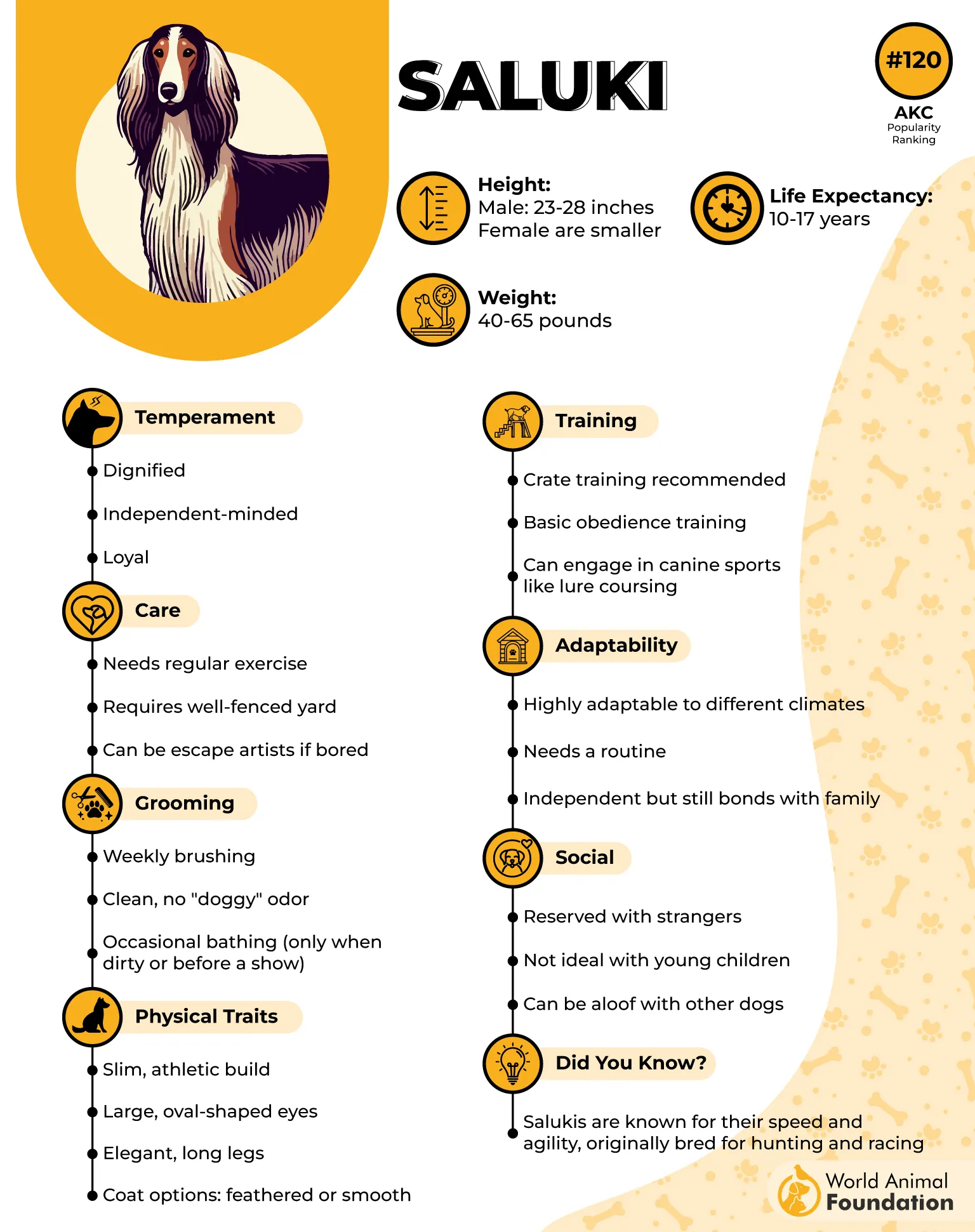
Minimal Coat, Maximum Utility
The Saluki’s coat is fine and feathered in some lines, or smooth in others—both designed to protect without retaining heat. Dust doesn’t cling to their fur, and grooming needs remain low despite the landscape. In such environments, these details aren’t decorative—they’re survival-based.
A Noble Legacy of Utility
Historically honored by Bedouins and even exempt from religious bans on dogs, the Saluki was often allowed to sleep in tents. This wasn’t sentiment—it was function and trust. As one of the oldest known dog breeds, they’ve served where reliability is life-saving.
2. Afghan Hound
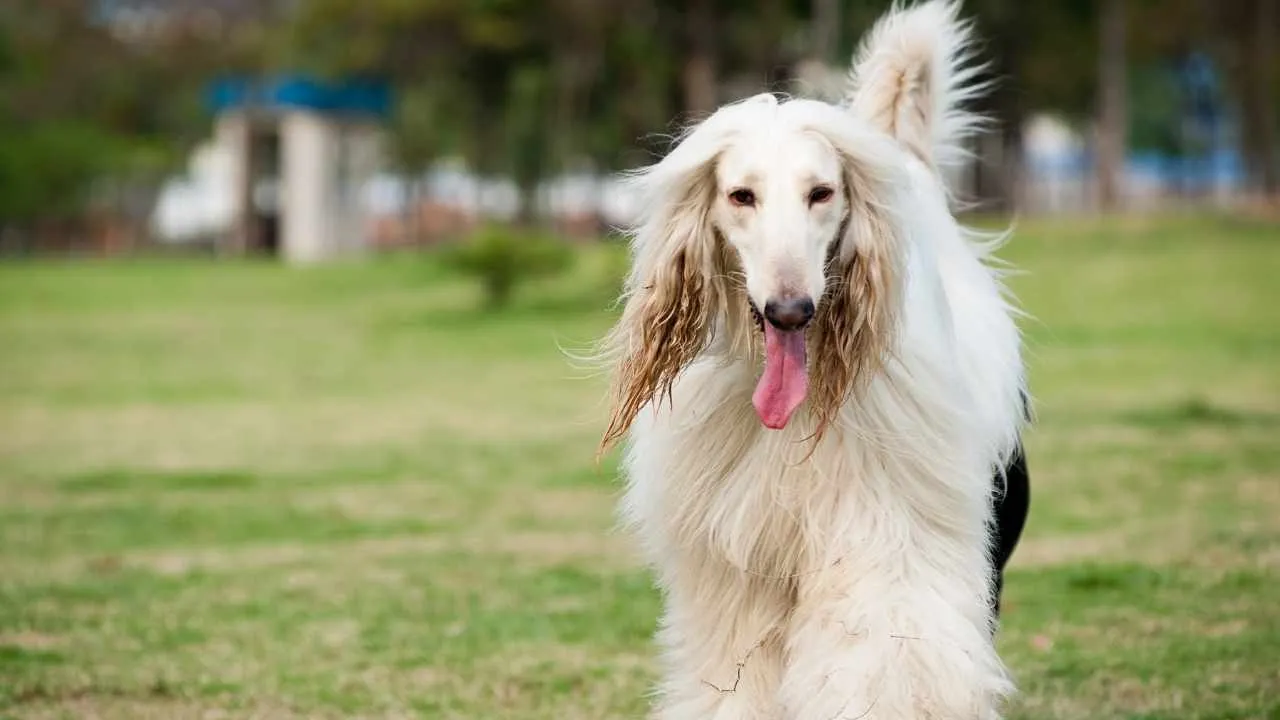
The Afghan Hound developed in regions like the deserts and mountains of Afghanistan, where hot weather conditions and rugged terrain shaped its endurance. Its body is built for long chases in the sun, supported by a narrow waist and strong chest. The lungs are roomy, aiding breath control during high-speed sprints.
Coat Built for Temperature Control
Despite its length, the silky coat insulates rather than overheats, protecting the skin from sun and sand. The texture is fine, helping air pass through and reducing trapped heat. Coat maintenance is necessary, but the design serves more than appearance.
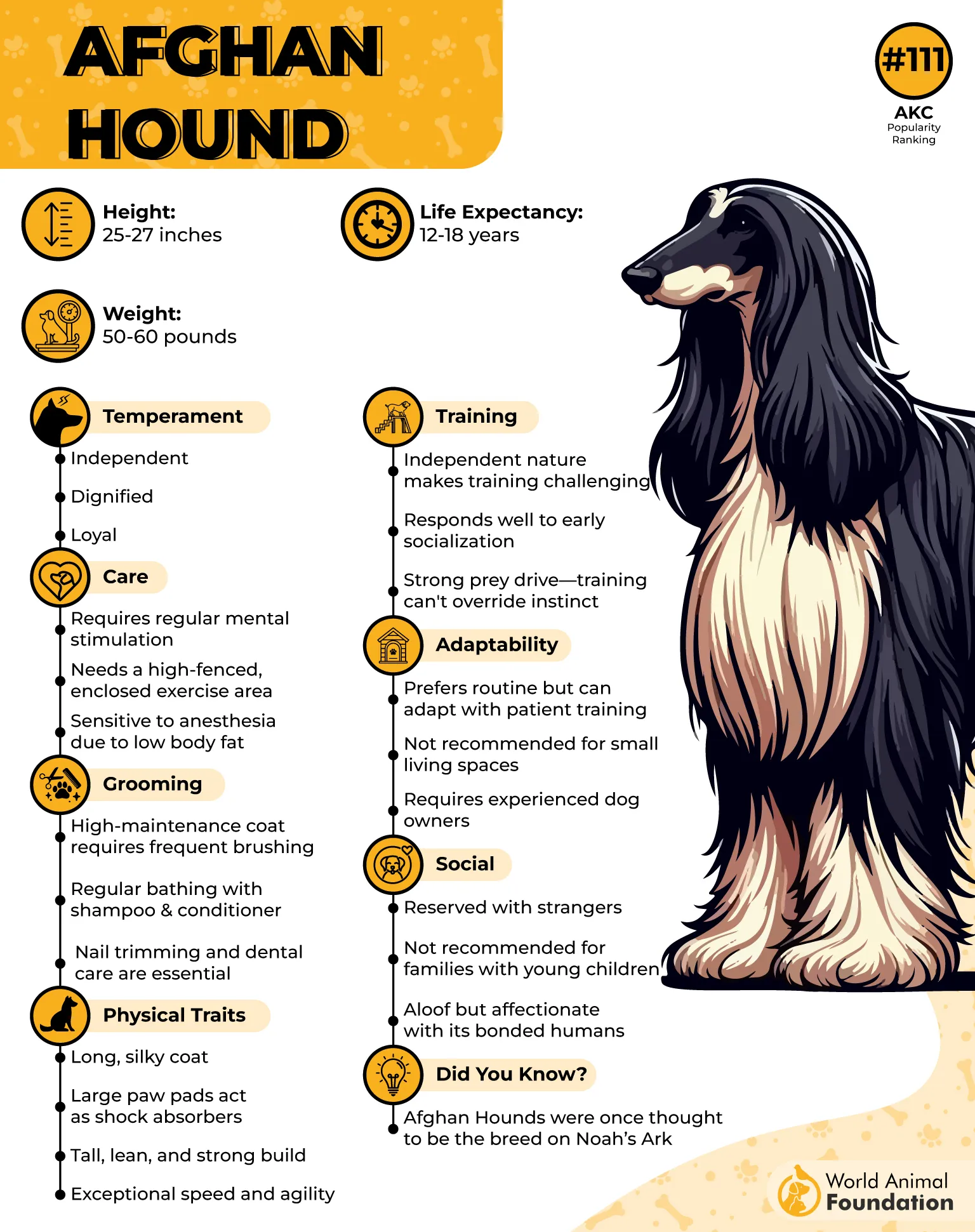
Naturally Reserved and Independent
This breed often displays independent judgment in wide spaces, choosing whether to engage or observe. That aloof nature allows it to remain calm without needing constant cues. It isn’t clingy, and many pet parents value this autonomy in open or minimally shaded land.
A Breed With Ancient Ties
As one of the oldest known sighthounds, the Afghan Hound is believed to have existed alongside nomadic tribes for thousands of years. A few dog breeds retain such a strong link to both form and function. Their long limbs, deep-set hips, and dry elegance reflect that nomadic heritage.
3. Basenji
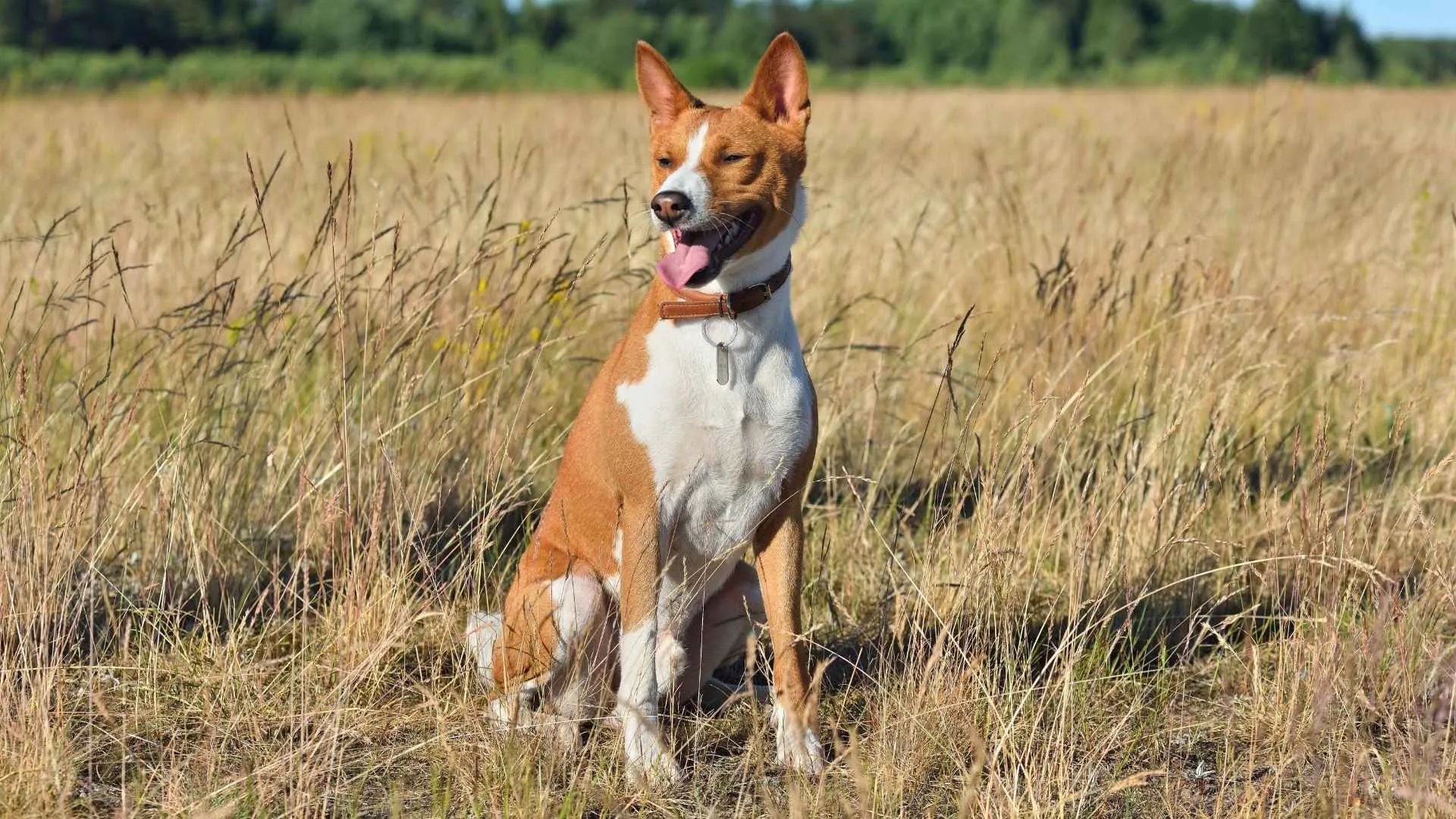
The Basenji originates from Central Africa, where it navigated dry bushland with agility and heat tolerance. Their compact body structure supports efficient heat dissipation and controlled movement across uneven terrain. Minimal skin folds reduce overheating and help keep them clean in dusty climates.
Clean and Odorless by Nature
One of the few breeds that groom themselves like cats, Basenjis rarely emit odor and need infrequent baths. This trait served them well during long hunts, where scent could alert prey. The coat’s texture also limits debris buildup, a useful trait in sandy regions.
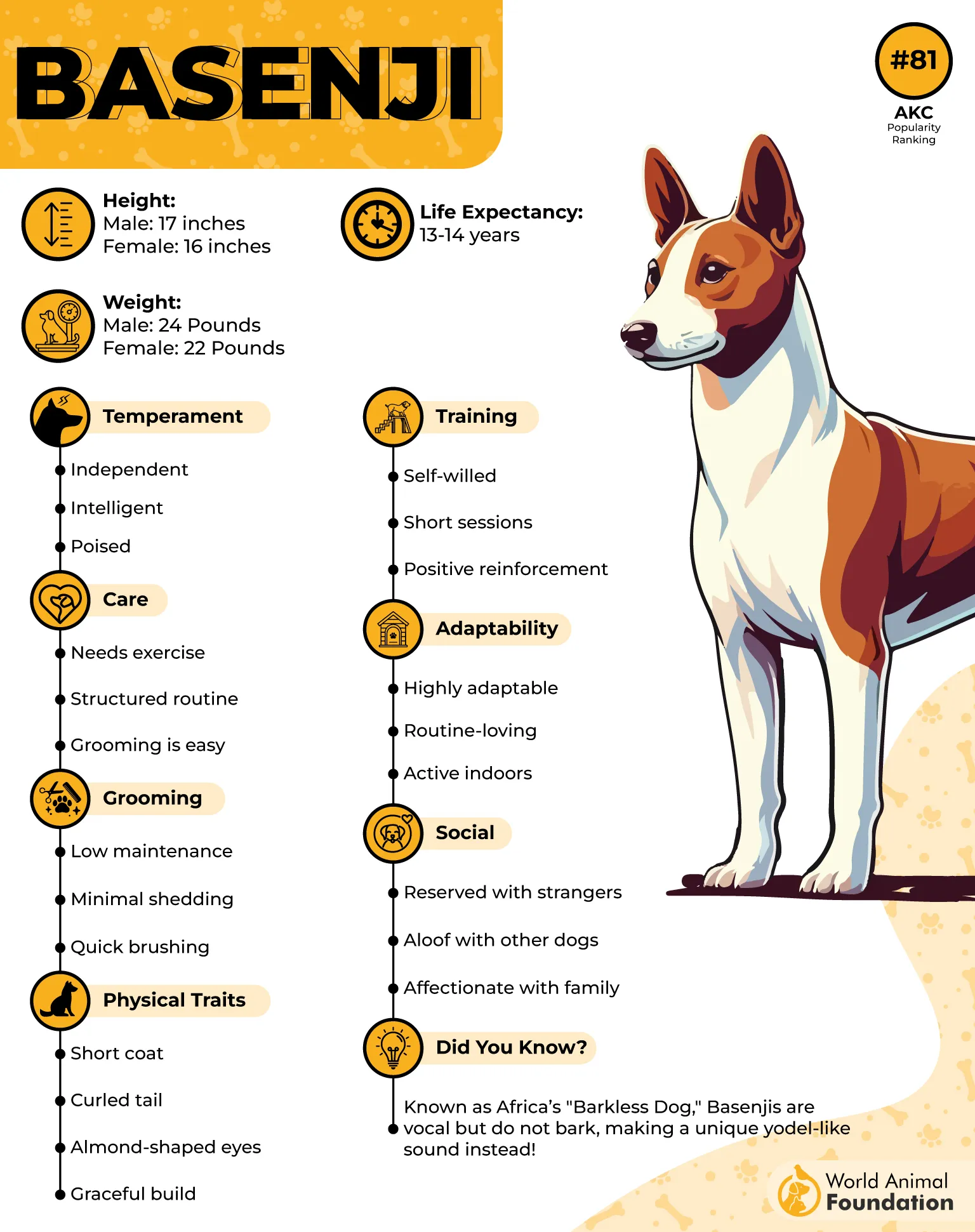
High Alert Without the Bark
They produce a yodel-like sound called a “baroo” due to a uniquely shaped larynx, often mentioned in breed registries, as per WebMD. This vocal pattern kept them discreet when tracking game in thick scrub. Their silent awareness makes them well-suited for alert work without commotion.
Energy-Driven and Mentally Sharp
This breed thrives on movement and problem-solving, requiring consistent physical stimulation and regular exercise to stay balanced. Their history as solo trackers shaped their decision-making instincts.
4. Vizsla
Vizslas were developed in Hungary’s great plains, where summers are dry and punishing. Their lean build, light coat, and tucked abdomen support internal cooling mechanisms. Even while running long distances, their body temperature remains well-regulated with proper hydration and rest.
Coat That Supports Desert Activity
Their single-layer, rust-colored coat is short and close-fitting, allowing for heat escape without trapping sand or sweat. No undercoat means fewer overheating risks, which is critical in hotter terrains. They’re one of the few hunting dogs to adapt so well to arid conditions.
Emotional Intelligence Outdoors
Despite their athleticism, Vizslas stay in sync with handlers and livestock, often shadowing routines without distraction. Their affectionate nature strengthens their reliability in working roles, especially when close communication is needed in wide, open landscapes.
Responsive to Environmental Shifts
While fast and energetic, Vizslas remain responsive to subtle terrain changes, avoiding overexertion where other dogs might struggle, as per PetMD. Their high sensitivity helps them navigate unique challenges like uneven ground, heat mirages, or sudden wind shifts in exposed desert areas.
5. Rhodesian Ridgeback
Rhodesian Ridgebacks were originally developed in southern Africa to tolerate heat, sparse water, and long distances. Their dense, short coat insulates them from direct sun without trapping heat. This structure allows them to remain well adapted to desert-like landscapes.
Energy That Needs Direction
With high endurance and a powerful stride, Ridgebacks require more than casual movement to stay balanced. Long-distance walks or fast-paced sessions are essential forms of daily exercise. Without that physical outlet, they can quickly become restless or bored.
Intelligence with Independence
They’re intensely observant and quick to learn patterns, but often choose when to respond. To stay mentally healthy, Ridgebacks need varied challenges that provide consistent mental stimulation without over-repetition.
A Distinctive Evolutionary Marker
Their famous “ridge” is a strip of hair growing opposite the rest of the coat, passed down from the Khoikhoi hunting dogs. It’s more than appearance—it links directly to their genetic development. This feature is shared by no other mainstream breed in the world.
6. Australian Cattle Dog
The Australian Cattle Dog has tight, weather-resistant skin and a dense double coat that deflects heat and dust. Its compact, muscular body makes movement efficient on rough, dry ground. These dogs don’t lose stride even across rocky or cracked surfaces.
Alertness Shaped by Function
Originally bred to manage cattle across vast Australian outback stations, their hyper-awareness developed out of necessity. They monitor their surroundings while remaining mentally locked on a task. Sudden distractions like shifting winds or desert critters rarely interrupt focus.
Heat Adaptation in Working Lines
Selective breeding created a dog that conserves water through efficient respiration and energy output. They can tolerate long hours in the sun without showing visible fatigue. Their paws are naturally toughened, reducing the risk from hot or uneven ground.
One of the Few Dingo-Linked Breeds
This breed contains actual Dingo DNA, which contributes to its endurance and survival instincts in dry climates, as per Rover. The cross was intentional, aimed at enhancing hardiness in extreme conditions. That genetic legacy still defines their working ability today.
7. Greyhound
With an exceptionally low body fat percentage and long limbs, Greyhounds naturally release heat more efficiently. Their lean build reduces thermal load, allowing quicker adaptation in arid surroundings. Their short, single-layer coat prevents excessive heat retention without exposing the skin.
Built for Quick Recovery
Greyhounds have a unique cardiovascular advantage—larger hearts relative to body size, supporting oxygen delivery even under stress, as stated in Oxford Stadium. This helps them cool down quickly after movement, a trait beneficial in temperature-intensive environments. Their recovery rate has been studied in veterinary sports medicine.
Minimal Coat Maintenance
Their smooth coat doesn’t trap dust or debris, which lowers the risk of irritation in sandy terrain. Greyhounds also tend to shed minimally, reducing grooming needs for desert-adapted households. Their skin is delicate, though, so shade access is still essential in peak heat.
One of the Oldest Breeds on Record
Traced back over 4,000 years, Greyhounds appear in early Egyptian tomb carvings and texts. Pharaohs selectively bred them for hunting in harsh landscapes. This highly accurate fun fact reflects their deep connection to early desert civilizations, not just sport.
8. Ibizan Hound
Ibizan Hounds have tight skin, lean musculature, and an elongated neck that enhances airflow in high-temperature areas. Their upright, narrow ears also aid in cooling by maximizing surface area for heat dissipation. This structural efficiency supports hours of movement under the sun.
Footing Over Shifting Terrain
The breed’s oval-shaped, hare-like feet act almost like shock absorbers on loose, hot terrain. These natural adaptations let them push forward on sand without losing traction. Their movement is quiet, balanced, and minimally disturbing to the desert ground.
Temperament Suited to Solitude
They tend to be independent, which works well in wide, open landscapes where constant supervision isn’t realistic. Their self-directed nature doesn’t reduce attentiveness—it adds to it. They notice distant movement and react without the need for cues or noise.
A Breed with Ancient Recognition
Traced back over 4,000 years, Ibizan Hounds appear in Egyptian artifacts with a striking resemblance to the modern form. They were used to hunt rabbits on the rocky terrain of Ibiza and nearby islands. That lineage is still visible in their high jump capability and alert frame.
9. Pharaoh Hound
The Pharaoh Hound’s lean frame and fine coat allow for fast heat dissipation during extended movement across desert terrain. Their large, upright ears enhance ventilation and assist in acute sound detection. Even their foot structure supports traction on rocky or sandy ground.
Endurance in Harsh Terrains
Capable of sustained sprints, this breed was traditionally used in Maltese hunting practices where agility and heat tolerance were critical. They can track, chase, and recover in searing daylight without significant fatigue. Their cardiovascular efficiency reflects centuries of adaptation.
Unique Behavioral Trait
One of the few breeds known to blush, the Pharaoh Hound’s nose and ears turn a deep rose color when excited, as per the Pharaoh Hound Club of America. This is documented in multiple breed standards and observed among owners. It’s a natural vascular response, not a novelty.
Historical Utility, Not Just Symbolism
Though often linked to ancient Egyptian imagery, the breed’s confirmed history ties most strongly to Malta, where it served as a skilled rabbit hunter. The focus was on performance, not presence. Ancient references match the physical structure still preserved today.
Conclusion
Desert climates reward the dogs built for them—lean, sharp, and aware of their limits. These aren’t just strong breeds; they’re intelligent dogs that listen to their bodies and adjust with ease.
If you live where the sun hits hard and water runs thin, cold-weather dogs won’t cope for long. But certain dog breeds thrive in these settings. Their history is tied to survival in sand, stone, and relentless heat.
Whether you’re new to desert living or have spent years in the terrain, these dogs make dependable partners for long days and warm nights.


